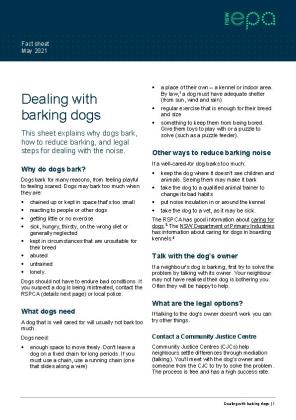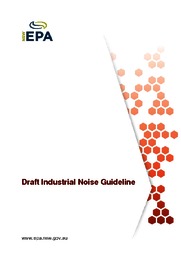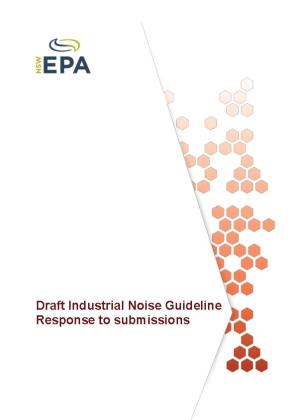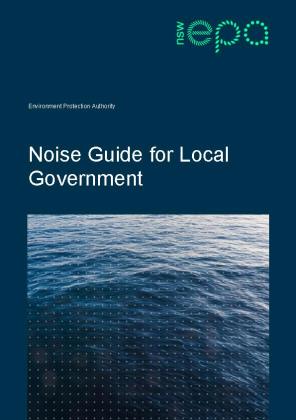This page deals with noisy vehicle exhaust and noise control equipment. Penalties also apply for other types of noise from vehicles and smoky vehicles.
Defective exhaust systems and noise control equipment
More noise does not mean more power or make you seem ‘cool’. Instead, it could mean spending a lot of money on repairs or paying a penalty.
If EPA authorised officers are undertaking a campaign and pull over your vehicle with illegal noise control equipment, they may issue a fine on the spot. There is a tiered scale for fines - the louder the exhaust noise, the greater the penalty.
Find out more about fines and penalties.
Causes of excessive noise
Excessive noise is caused by:
- the exhaust system having been replaced with a sports or other loud system to make it ‘roar’
- the baffles having been altered or removed from the muffler
- defective noise control equipment in the exhaust system or engine making gas escape from a place other than the exhaust outlet
- noise control equipment having been fitted or modified to make more noise than the original equipment fitted by the vehicle manufacturer
- noise control equipment such as mufflers and baffles having been removed and not replaced.
It is also an offence to use temporary noise reduction devices or packing in vehicle exhausts, including:
- baffles in the exhaust system that have not been welded or riveted in place
- valves or other adjustable equipment
- materials inserted into the exhaust system, such as steel wool.
However, the following equipment is permitted:
- baffles that were not welded or riveted or an adjustable device in the exhaust system, or a replacement equivalent to that fitted by the manufacturer, when the vehicle was manufactured
- baffles bolted or otherwise securely fastened on a motorcycle.
Prevent noisy exhaust
- Listen to the exhaust system when buying a vehicle. If it sounds noisier than unmodified vehicles of the same make and model, the exhaust system may have been altered. If in doubt, make inquiries.
- Regularly have your exhaust mufflers maintained.
- Do not fit equipment that causes increased exhaust noise.
More information on noisy vehicles.
More information on regulating noisy vehicles.
Legal noise levels
Legal noise levels depend on whether the vehicle is certified according to Australian Design Rule (ADR) 83/00, which came into force progressively from 2005. ADR83/00 noise levels can be found on the federal Department of Infrastructure and Transport's website.
For vehicles certified before ADR 83/00 came into force, Schedule 1 of the Protection of the Environment (Noise Control) Regulation 2017 specifies prescribed noise levels.
This means, for example:
- for cars built before January 1983, the maximum noise level is 96 decibels
- for newer cars built before Australian Design Rule (ADR) 83/00 came into force from 2005, the level is 90 decibels
- for motorcycles built on or after 1 March 1984, and manufactured for use on a road, the level is 94 decibels
- the noise level for other motorcycles is 100 decibels.
For vehicles certified since ADR 83/00 came into force, clauses 4(b) and (c) of the Protection of the Environment (Noise Control) Regulation state:
- for vehicles with compliance plate dates of 1 September 2011 or earlier, the prescribed noise level is the higher of either the level in Schedule 1 or the ADR 83/00 signature level plus 5 decibels
- for vehicles with compliance plate dates after 1 September 2011, the prescribed noise level is the ADR 83/00 signature level plus 5 decibels.
Getting a vehicle inspection notice
If someone has reported your vehicle to the EPA and the EPA believes it is exceeding legal noise levels, you will receive a vehicle inspection notice (VIN). The VIN will instruct you to take the vehicle to an approved station where its noise levels will be tested and its pollution control devices inspected.
It is a good idea to have any faulty equipment repaired before contacting the station to make an appointment. Ensure you visit the station before the ‘compliance due date’ on the VIN, and as soon as possible after receiving the VIN to allow yourself enough time to undertake any further necessary repairs.
EPA approved inspection stations
|
Location |
Approved inspection station |
Contact details |
Vehicles tested |
|---|---|---|---|
|
Wollongong area |
Danic’s Auto & Tyre Service Centre |
Tel: (02) 4257 9999 Fax: (02) 4256 2180 |
Cars |
|
South Western Sydney area |
Waminda Service Centre |
Tel: (02) 4625 6706 Fax: (02) 4620 4081 |
Cars |
|
Western Sydney area |
Archer’s Motor Repairs Pty Ltd |
Tel: (02) 9637 5583 Fax: (02) 9637 0574 |
Cars |
|
Central Coast Hunter area |
Redhead Automotive Centre |
Tel: (02)4944 7855 Fax: (02) 4944 8425 |
Cars |
|
Port Stephens Nth Newcastle area |
Medowie Motors Pty Ltd |
Tel: (02)4981 8206 Fax: (02) 4981 8203 |
Cars |
|
North Coast area |
Toormina Auto Care |
Tel: (02) 6653 1523 Fax: (02) 6699 2601 |
Cars |
You can take your vehicle to any EPA approved inspection station, but to avoid problems or delays in processing the mechanic’s report, take your vehicle to the same station for any further inspections.
Getting your vehicle inspected
A mechanic at the inspection station, who the EPA has trained in testing vehicle exhaust noise and identifying and assessing vehicle pollution control devices, will inspect your vehicle.
An exhaust noise test will be conducted according to the National Stationary Exhaust Noise Test Procedures for in-service Motor Vehicles. The mechanic will measure noise levels when the engine is running at a predetermined engine speed (RPM) and when the engine is reduced from the RPM. The vehicle’s exhaust noise level is the maximum average level recorded during the noise test.
The maximum fee for tests or inspections of a car, bus or truck are:
- $89.65 in the 2022-23 financial year
- $91.35 in the 2023-24 financial year
- $93.10 in the 2024-25 financial year
- $94.85 in the 2025-26 financial year
- $96.65 in the 2026-27 financial year
The maximum fee for tests or inspections of a motorcycle are:
- $59.50 in the 2022-23 financial year
- $60.65 in the 2023-24 financial year
- $61.80 in the 2024-25 financial year
- $62.95 in the 2025-26 financial year
- $64.15 in the 2026-27 financial year
The EPA approved mechanic can answer all your questions about the noise test or vehicle inspection. Otherwise, contact the EPA on 02 9995 5700.
After the inspection, the mechanic will complete an approved report and send it to the EPA and to you. If the vehicle noise levels and the pollution control devices comply with legislation, you will receive a letter stating no further action is necessary.
If your vehicle needs repairs, the report will advise you of the repairs to be completed by the compliance due date on the VIN. You or a mechanic of your choice may repair the vehicle. An EPA approved mechanic does not have to do it. You must then take the vehicle back to the approved station for testing and inspection.
Receiving a defective vehicle notice
You will receive a defective vehicle notice (DVN) if:
- the mechanic’s report indicated you needed to repair your vehicle by the compliance due date on the VIN, and this date has lapsed
- you ignored the VIN or did not take the vehicle to the approved station by the compliance due date.
A DVN may require you to:
- reduce the vehicle’s exhaust noise levels to within the legal limits
- rectify any defective noise control equipment
- refit, reconnect or repair any prescribed anti-pollution devices or any device to minimise air pollution.
You can repair the vehicle yourself or select a mechanic to repair it. An EPA approved mechanic does not have to repair it.
Once repairs are completed, you must take your vehicle to the EPA approved station for testing and inspection by the compliance due date on the DVN.
When your vehicle is unavailable or you do not have documentation
Email the EPA on info@epa.nsw.gov.au or phone 02 9995 5700 if:
- your vehicle has been sold, stolen, in an accident or taken temporarily or permanently off the road before the compliance due date in the VIN or DVN
- you have not received or have lost the VIN or DVN: the EPA will send a copy which you must take to the approved inspection station when you present the vehicle for testing and inspection
Suspension of vehicle registration
The EPA may suspend your vehicle’s registration if:
- you failed to present your vehicle for inspection by the compliance due date on the DVN
- any subsequent defects were not rectified by the compliance due date on the DVN and the motor vehicle was in such a condition that its sale or use would constitute an offence.
If the registration is suspended, you cannot use the vehicle on a road or road-related area, except to take it to:
- be tested and or inspected in accordance with the requirements of the DVN
- have repairs or other work carried out to comply with the DVN
- return the vehicle from such a place to the place where the vehicle is usually kept.
If your registration is suspended and you then repair the vehicle, take it to an approved station for testing and inspection. Give the DVN to the mechanic as it will contain details of the required repairs. The mechanic will inform the EPA if the defects have been rectified. The EPA will then clear the DVN and lift the suspension of registration.





